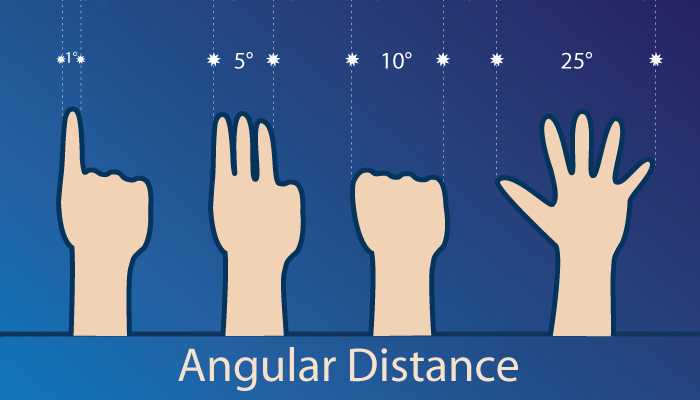| How to: Measuring Distance ⬅︎ |
 |
If someone asked you to define the word distance, what would you say? If you said something like how far it is from one point to another, then of course you'd be right.
For stargazers, there is another meaning to the word that, perhaps, is more useful. It is how far one object, like a star, is from another in the dome of our sky. For example, the distance from the end pointer star in the Big Dipper to Polaris, the North Star, is about 29°, or twenty-nine degrees.
This type of distance is known as angular distance and it is measured in degrees. We all know there are 360° in a circle. This means that the distance from one horizon across the sky to the opposite horizon is 180° because it is half of a circle.
Just as miles are divided into yards and feet, angular degrees are divided into arc-minutes and arc-seconds. Most of the time we just say minutes and seconds. There are 60 minutes in a degree and 60 seconds in a minute. How big is a minute? Both the sun and moon are 30 minutes across. This is the same as 1/2 degree. Jupiter is 30 seconds across when it is furthest and 50 when it is closest.
A great way for stargazers to measure angular distance in the sky is to use hands. At arms length, a single finger width is about 1°, three fingers is 5°, a fist is 10° and an outstretched hand is 25°.
These are good to memorize because many of the directions for finding targets in the Starry Hill Calendar and in stargazing books use angular distance. Be sure to check out the other topics below. |
|
| ▶︎ Why Stargaze?
▶︎ The Night Sky
▶︎ North
▶︎ Planets
▶︎ Brightness
▶︎ Distance
|



